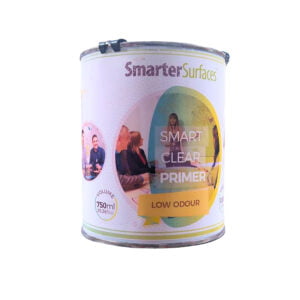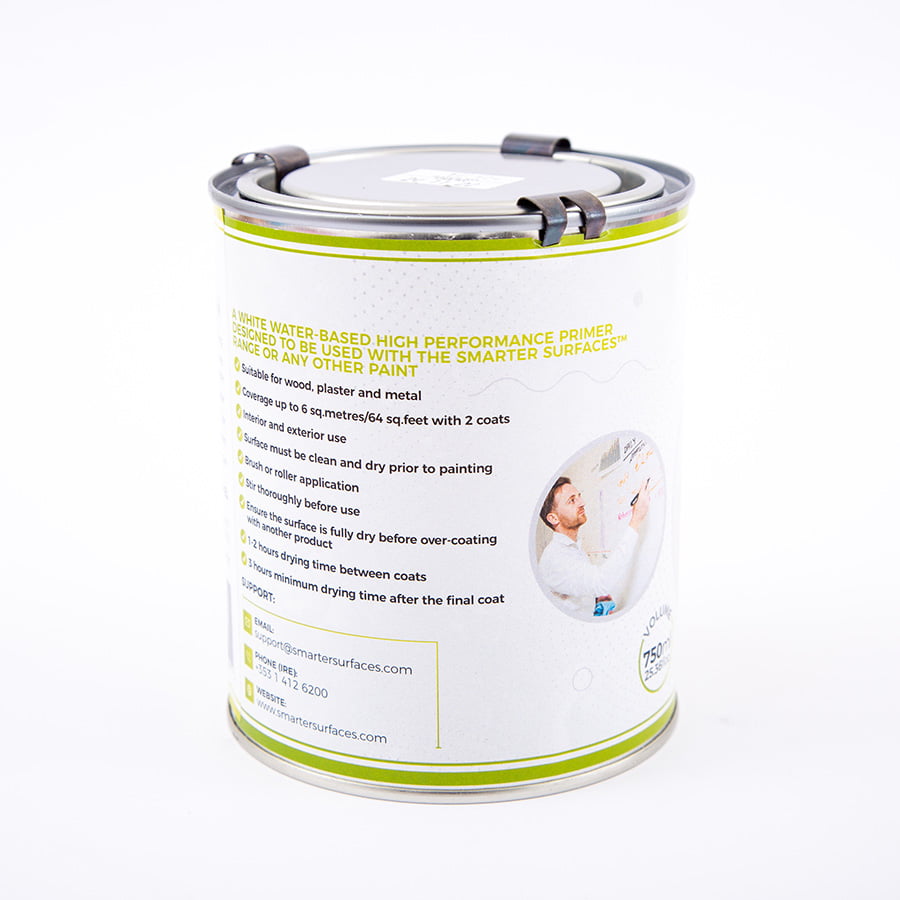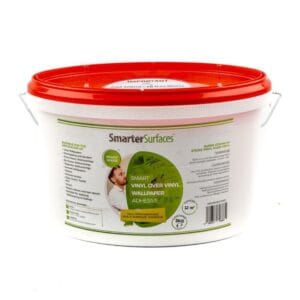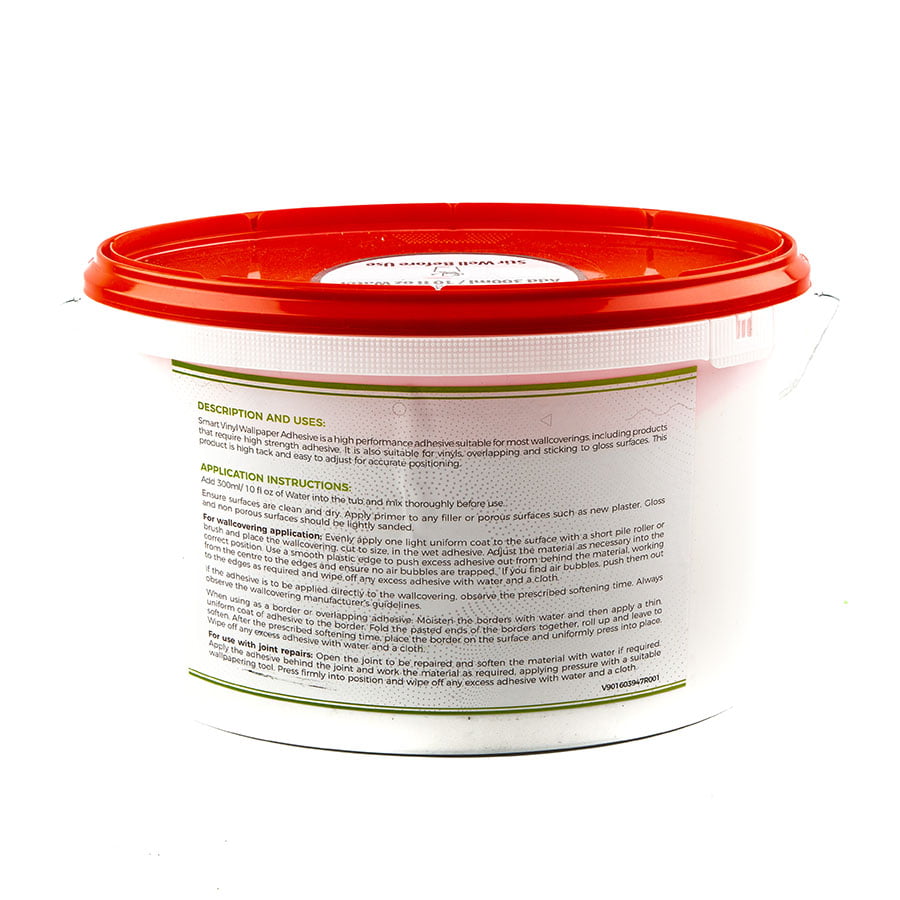Home - Primers & Adhesives
Primers, Adhesive for Whiteboard Walls & Surfaces
The Essential First Step for a Smooth, Professional Surface Preparation
At Smarter Surfaces, we offer premium-quality white and clear primers, alongside a specialised extra strong vinyl-over-vinyl adhesive, to facilitate optimal outcomes in surface transformation projects.
Smart White Primer
From AUD$45.00 Select options This product has multiple variants. The options may be chosen on the product pageSmart Vinyl over Vinyl Wallpaper Adhesive
AUD$120.00 Select options This product has multiple variants. The options may be chosen on the product page
Expert Preparation Solutions for Paint and Wallpaper Application.
- White Primers: Our high-opacity white primers provide a uniform, opaque base, making them suitable for applications involving whiteboard and magnetic paints. These primers ensure a smooth well covered surfaces.They contribute to performance of the finished surface, delivering a professional-grade result.
- Clear Primers: Designed to maintain the original colour and aesthetic of a surface, our clear primers prepare the area for the application of whiteboard or magnetic paints without altering their visual integrity. These primers ensure smooth adhesion while preserving the intended design and appearance of the space.
- Vinyl-Over-Vinyl Adhesive: Created for the installation of whiteboard wallpapers and heavy materials, this high-performance super strong adhesive establishes a strong and durable bond between existing vinyl surfaces and newly applied wallpaper. It is effective for challenging surfaces such as glass and composite materials. It ensures long-term durability and stability for writable wall applications.
FAQ's
To achieve optimal adhesion of the primer, it is essential to thoroughly clean the surface, removing all traces of dirt, dust, and other contaminants. For surfaces with a gloss finish, light sanding is recommended to create a textured surface that facilitates primer adherence. Also, the surface must be completely dry before applying the primer to ensure its effectiveness.
Yes, the application of primer is a crucial step when using white dry erase paint, mainly on porous or dark surfaces. Primer serves to create a smooth, sealed foundation, thereby enhancing paint adhesion and ensuring a uniform, high-quality finish. However, for transparent or clear whiteboard paint, a clear primer is only required when applying the paint to porous surfaces.
The cleaning process should begin with the removal of dirt, grease, and dust using a mild detergent. Any cracks or imperfections must be repaired before proceeding. The surface should be lightly sanded to ensure smoothness and must be completely dry before the priming process begins.
A regular primer functions as a preparatory coating applied to surfaces before painting. In contrast, a surface primer is designed to adhere to a variety of materials, including plastic, metal, and wood, thereby providing an optimized base for the subsequent application of a topcoat.
The process begins with a thorough cleaning of the board, followed by light sanding to create a smooth surface. A coat of primer should then be applied using either a brush or a roller. To achieve the best possible results, a second coat is recommended once the initial layer has dried. It ensures even coverage before proceeding with the painting process.
No, using white paint in place of primer is not recommended. Primer is formulated to adhere effectively to surfaces, seal imperfections, and establish a uniform base for paint application. These functions cannot be performed by regular white paint.
Failure to apply primer before painting may result in inadequate adhesion, uneven colouration, and reduced durability. As a consequence, the paint may peel or chip prematurely, requiring additional coats and increasing both labour and material costs.
Yes, lightly sanding the primer with fine-grit sandpaper helps eliminate imperfections and creates a smoother surface for painting. It is crucial to ensure that any residual dust generated during sanding is completely removed before proceeding with the application of paint.
The surface should first be cleaned and any cracks or holes should be repaired to ensure a smooth substrate. For surfaces that are glossy or slick, light sanding is advised to promote better adhesion of the primer.
The preparation process involves cleaning the existing vinyl surface thoroughly to remove any accumulated dirt or grease. The area should then be gently sanded to improve adhesion, and it is essential to ensure that the surface is entirely dry before applying the vinyl-over-vinyl adhesive.
Yes, the use of vinyl-over-vinyl adhesive is essential to establish a secure bond between the existing vinyl surface and the dry erase wallpaper. This ensures long-term durability and optimal performance of the wallpaper.







